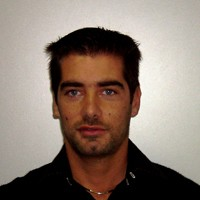State-of-the-Art of Techniques, Devices and Electronic Circuits for Energy Harvesting
A special issue of Applied Sciences (ISSN 2076-3417). This special issue belongs to the section "Energy Science and Technology".
Deadline for manuscript submissions: closed (31 May 2020) | Viewed by 35184
Special Issue Editors
Interests: piezoelectric sensors and transducers; resonant and acoustic-wave sensors; energy harvesting for sensors; sensor interface electronics; MEMS and microsensors for physical quantities
Special Issues, Collections and Topics in MDPI journals
Interests: micro power generators for autonomous microsystems, design and technologies for integrated micro–nano systems and microsystems for bio and medical application
Interests: energy harvesting for autonomous sensors and microsystems; sensors for physical and chemical quantities; piezoelectric sensors and transducers; resonant and acoustic-wave sensors; low-noise front-end electronics for sensors; contactless interrogation techniques for resonant and capacitive sensors; MEMS and microsystems
Special Issue Information
Dear Colleagues,
After the initial pioneering period of novelty and curiosity, energy harvesting has recently become a mature research field that today engages and fascinates scientists and engineers worldwide.
Energy harvesting consists of collecting the sparse energy available in the environment across different domains—such as mechanical, thermal, and radiant—and converting it into electrical energy to power sensor nodes, embedded or wearable devices, and low-power electronic circuits.
Energy harvesting is seen as a competitive alternative to batteries or fixed power supplies, and it is recognized as an enabling technology for the development of energetically autonomous wireless sensor units capable of a virtually unlimited lifetime in unattended operation. Such innovative devices could find applications in a variety of sectors, such as industrial automation, automotive and avionics, structural and environmental monitoring, precision agriculture, portable and wearable devices, internet of things and smart cities.
Significant progress in the field has been made since the early results, and commercial solutions are now on the market. However, open challenges still exist, initial expectations are being better defined, and new opportunities are emerging through the development of research and knowledge.
This Special Issue is intended to provide an updated overview of the current status of the research on energy harvesting, especially oriented to sensors and microsystems.
We warmly invite you to submit contributions on all scientific and technical aspects of energy harvesting, ranging from conversion techniques and devices at the macro- or microscale, to electronic circuits for energy management, sensor signal conditioning and transmission.
The topics include, but are not limited to, the following:
- Theory, design, modeling, fabrication, experimental characterization and applications of energy harvesting systems
- Mechanical, thermal, radio-frequency, solar energy harvesting
- Piezoelectric, electrostatic, electromagnetic, triboelectric, thermoelectric, pyroelectric, and other, conversion effects in energy harvesting
- MEMS and microscale energy harvesters
- Electronic circuits for energy management and storage
- Autonomous sensors and battery-less sensor nodes
- Zero-power sensing
Prof. Dr. Vittorio Ferrari
Prof. Dr. Skandar Basrour
Prof. Dr. Marco Ferrari
Guest Editors
Manuscript Submission Information
Manuscripts should be submitted online at www.mdpi.com by registering and logging in to this website. Once you are registered, click here to go to the submission form. Manuscripts can be submitted until the deadline. All submissions that pass pre-check are peer-reviewed. Accepted papers will be published continuously in the journal (as soon as accepted) and will be listed together on the special issue website. Research articles, review articles as well as short communications are invited. For planned papers, a title and short abstract (about 250 words) can be sent to the Editorial Office for assessment.
Submitted manuscripts should not have been published previously, nor be under consideration for publication elsewhere (except conference proceedings papers). All manuscripts are thoroughly refereed through a single-blind peer-review process. A guide for authors and other relevant information for submission of manuscripts is available on the Instructions for Authors page. Applied Sciences is an international peer-reviewed open access semimonthly journal published by MDPI.
Please visit the Instructions for Authors page before submitting a manuscript. The Article Processing Charge (APC) for publication in this open access journal is 2400 CHF (Swiss Francs). Submitted papers should be well formatted and use good English. Authors may use MDPI's English editing service prior to publication or during author revisions.
Benefits of Publishing in a Special Issue
- Ease of navigation: Grouping papers by topic helps scholars navigate broad scope journals more efficiently.
- Greater discoverability: Special Issues support the reach and impact of scientific research. Articles in Special Issues are more discoverable and cited more frequently.
- Expansion of research network: Special Issues facilitate connections among authors, fostering scientific collaborations.
- External promotion: Articles in Special Issues are often promoted through the journal's social media, increasing their visibility.
- Reprint: MDPI Books provides the opportunity to republish successful Special Issues in book format, both online and in print.
Further information on MDPI's Special Issue policies can be found here.







